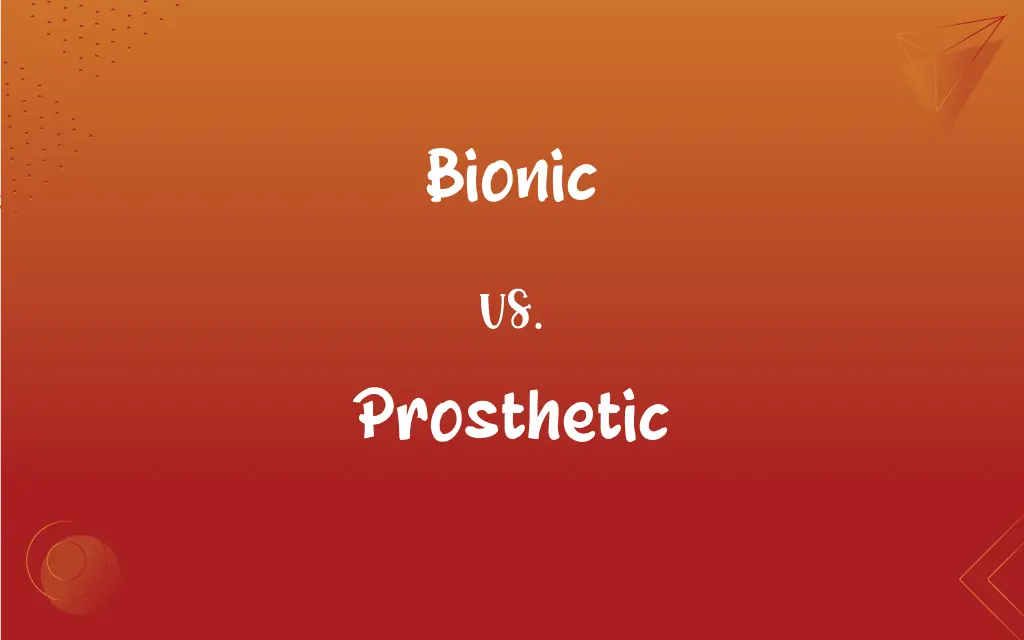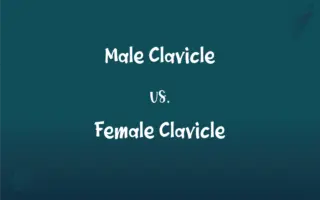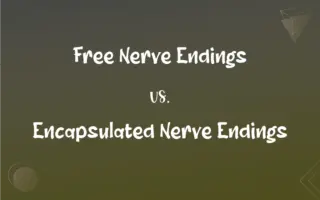Bionic vs. Prosthetic: What's the Difference?
By Janet White || Published on January 2, 2024
Bionic refers to artificial body parts integrated with biological systems, often enhanced with electronic or mechanical components, while prosthetic refers to devices that replace or support missing body parts without enhancement.

Key Differences
Bionic devices are designed to integrate with the body's biological systems, often enhancing natural functions. Prosthetics, in contrast, aim to replace or support lost or damaged body parts without enhancing natural functions.
Bionic limbs often incorporate advanced technology like sensors and motors for improved functionality. Prosthetics provide basic functions, focusing on replicating the appearance and basic capabilities of the lost limb.
Bionic devices can interact with the user's nervous system, allowing for more natural control. Prosthetics usually rely on mechanical means for control, such as harnesses or residual limb movements.
Bionic devices are typically more expensive and less accessible than prosthetics due to their advanced technology. Prosthetics are more widely available and vary in sophistication, from simple cosmetic to more functional designs.
Advancements in bionics continue to push boundaries in artificial intelligence and robotics. Prosthetic technology also evolves, focusing on improved comfort, functionality, and accessibility.
ADVERTISEMENT
Comparison Chart
Integration
Integrates with biological systems
Replaces or supports body parts
Technology
Advanced technology for enhanced functions
Basic functionality, less high-tech
Control Mechanism
May interact with the nervous system
Generally uses mechanical control
Cost and Accessibility
Typically more expensive and less accessible
More widely available and affordable
Development Focus
AI and robotics advancements
Comfort, functionality, accessibility
ADVERTISEMENT
Bionic and Prosthetic Definitions
Bionic
Bionic devices are technologically advanced.
Bionic prostheses incorporate sensors for improved functionality.
Prosthetic
Prosthetics are customized for comfort and fit.
Her prosthetic foot was tailored for her specific needs.
Bionic
Bionics integrate mechanical elements with biological systems.
Her bionic eye combines camera technology with nerve connections.
Prosthetic
Prosthetics are artificial body parts.
The prosthetic leg helped him walk again.
Bionic
Bionics is a field within robotics.
Bionic hands are a breakthrough in robotics.
Prosthetic
Prosthetics replace lost or damaged limbs.
She chose a prosthetic arm that matched her skin tone.
Bionic
Bionics refer to enhanced artificial body parts.
The bionic arm had advanced grip capabilities.
Prosthetic
Prosthetics offer basic, non-enhanced functionality.
The prosthetic hand had a simple grasping mechanism.
Bionic
Bionics often utilize artificial intelligence.
His bionic leg adapts to terrain using AI.
Prosthetic
Prosthetics support bodily functions.
His prosthetic provided balance and support.
Bionic
Of or relating to bionics.
Prosthetic
Serving as or relating to a prosthesis.
Bionic
Having anatomical structures or physiological processes that are replaced or enhanced by electronic or mechanical components.
Prosthetic
Of or relating to prosthetics.
Bionic
Having extraordinary strength, powers, or capabilities; superhuman.
Prosthetic
Artificial, acting as a substitute for part of the body; relating to prosthesis
Prosthetic leg/arm
Bionic
(not comparable) Related to bionics.
Prosthetic
An artificial replacement for part of the body; a prosthesis, prosthetic device.
Bionic
(of a biological organism) Having been enhanced by electronic or mechanical parts; cyborg.
Prosthetic
An addition to an actor etc.'s body as part of a costume, intended to transform the person's appearance.
Bionic
Superhuman.
Prosthetic
Of or pertaining to prosthesis; prefixed, as a letter or letters to a word.
Bionic
Of or relating to bionics
Prosthetic
Of or relating to prosthetics
Bionic
Having particular physiological functions augmented or replaced by electronic or electromechanical components
Prosthetic
Relating to or serving as a prosthesis
FAQs
How do bionics differ from traditional prosthetics?
Bionics often have enhanced functionalities and integrate more closely with the body, whereas prosthetics provide basic replacement or support.
What is a prosthetic?
A prosthetic is an artificial device that replaces or supports a lost or damaged body part.
Can prosthetics be customized?
Yes, prosthetics are often customized for comfort and specific needs.
Are bionic devices common?
They are less common than prosthetics due to higher costs and complexity.
Do bionics require surgery for integration?
Some bionic devices may require surgery for full integration with the body.
Can children use prosthetic limbs?
Yes, prosthetics are available for children and are adjusted for growth.
What is a bionic device?
A bionic device is an artificial body part that integrates with biological systems and often includes advanced technology.
What advancements are expected in bionic technology?
Future advancements may include improved AI integration and more naturalistic movement.
Can prosthetics mimic natural limb movements?
Advanced prosthetics can mimic basic movements but are less dynamic than bionics.
What is the cost difference between bionic and prosthetic devices?
Bionic devices are generally more expensive due to advanced technology.
Are bionic devices accessible to everyone?
Accessibility is limited by cost and the availability of specialized medical facilities.
How do bionics impact rehabilitation?
Bionics can significantly enhance rehabilitation, offering more natural and efficient movement.
Do bionics require special maintenance?
Bionics often require more maintenance than prosthetics due to their complexity.
What materials are used in prosthetics?
Prosthetics are made from various materials like plastic, metal, and carbon fiber for strength and lightness.
Can bionic devices help with nerve damage?
Some bionic devices can assist in cases of nerve damage by bypassing damaged areas.
Can prosthetics be used in sports?
Specialized prosthetics are used in sports, offering functionality and durability.
Is it possible to feel with a prosthetic limb?
Traditional prosthetics do not provide sensory feedback, unlike some advanced bionic limbs.
Do bionic limbs look like natural limbs?
Some bionic limbs are designed for aesthetic similarity, but functionality is the primary focus.
How does insurance cover bionic and prosthetic devices?
Coverage varies; bionic devices are often less likely to be fully covered due to their high cost.
Are prosthetics evolving technologically?
Prosthetic technology is evolving, focusing on improved functionality and comfort.
About Author
Written by
Janet WhiteJanet White has been an esteemed writer and blogger for Difference Wiki. Holding a Master's degree in Science and Medical Journalism from the prestigious Boston University, she has consistently demonstrated her expertise and passion for her field. When she's not immersed in her work, Janet relishes her time exercising, delving into a good book, and cherishing moments with friends and family.






































































